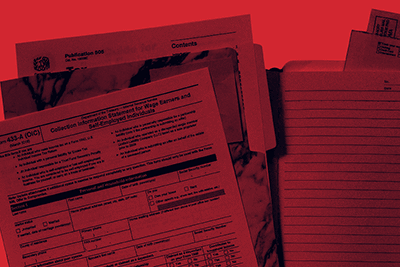Captive Insurance, Tax
IRS Dirty Dozen #12: The Treasury’s Plan to Tame 831(b) Abuse
Article reading time: 5 minutes
Hot Take:

The well-publicized annual IRS Dirty Dozen scams list of bogus tax avoidance schemes was recently published for 2022 (IR-2021-144). Micro-captive insurance arrangements, specifically related to IRC §831(b) programs, continue on that list as a major opportunity for abuse in contrast to the original intent of the statute. The most recent Treasury Green Book focuses on “revenue enhancement” reforms in the 2023 budget modifications to include significant boundaries on the 831(b) topic. In this discussion, we address the proposed fix and its implications.
Full Article
Background:
Captive insurance is intended to provide a more affordable insurance coverage option coupled with a valid tax structure for small-business owners. The original goal is to provide an avenue for small businesses to access the insurance arena for their unique business needs and do so with a vehicle to control their cost structure. If the captive arrangement meets certain risk-distribution parameters, premiums paid to a captive insurer can be tax-deductible. The business gets a current year deduction even though overall losses may be minimal.
Let’s first define an IRC 831(b) micro-captive. The arrangement involves a non-life insurance company that receives net written premiums (or if larger, direct written premiums) during the taxable year that does not exceed $2.45 million (as of 12/31/2021). This benchmark is indexed annually for inflation. A key point is that a qualifying 831(b) captive insurance company must meet ownership diversification requirements. In particular, no more than 20% of its net written premium may be ascribable to any one policyholder. There are specific limitations with respect to what defines “related policyholders” in IRC §267(b) or §707(b). All policyholders meeting the “related” definition under the IRC statutes are treated as a single policyholders. It is highly important to make the proper ownership distinctions, as it can disqualify an 831(b) election if improperly applied.
Next, let’s understand the original IRC 831(b) provision, election, and intent. It is an irrevocable taxpayer election and provides for a qualifying entity to be taxed only on its taxable investment income, generally consisting of interest, dividends, rents, capital gains, royalties, miscellaneous non-insurance income less deductions associated with investment income (tax-exempt interest, dividends received and capital losses). The election alternatively bypasses the typical insurance taxation calculation process, which includes taxation of overall insurance net income, including all premium, investment income, other income, claim, and expense components. Each business entity purchasing a policy from the electing entity will take a tax deduction for premiums paid. Typically, the taxpayer will own both the electing insurance entity coupled with one or more businesses that pay insurance premiums to the electing entity.
So, What’s the Rub?
This small business insurance tax alternative provides a truly great advantage for a taxpayer that qualifies legitimately–and generates more efficient and cost-effective insurance coverage options for its non-insurance business entities–and do so on a smaller scale than having to access hard-to-find and/or expensive commercial outlets.
The rub comes in its typical fashion when creative promoters take advantage of and promote “easy money” tax abuses. Unfortunately, the 831(b) program has been a prime target for abuse of the definition of insurance for the sake of large tax deductions.
IRS audits continually search to uncover situations categorized as insurance that do not satisfy federal tax law requirements for insurance contracts. Additionally, premiums charged are many times irrationally high, which of course, creates large amounts of underwriting income going untaxed, amounts which are realistically not needed to pay future policyholder claims and expenses (e.g., Avrahami v. Commissioner – 2017). Further, the funds accumulated as premiums are frequently utilized for personal or business purchases or loans to the policyholder and/or related persons. The situation is exacerbated where premiums are associated with a small number of policyholders, as is the case in the IRC 831(b) scenario.
The Proposed Fix:
Rather than eliminate this valuable incentive entirely, the alternative being floated would establish an accumulation account termed the Untaxed Income Account (UIA). It comes into play when an IRC 831(b) electing insurance company falls into a category called a “covered insurance company.” A covered insurance company (CIC) is one in which the electing company fails to meet the first ownership diversification requirement described earlier (i.e., the first taxable year the electing insurance company has more than 20% of its net written premium, or direct written premium if greater, ascribable to any one policyholder or group of related taxpayers). UIA is defined as taxable income, or net operating loss, of the company, based on the premise that the company is taxed as a non-electing insurance company and disregarding the deduction for net operating loss carrybacks or carryovers and further subtracting the company’s taxable investment income or loss. Each year, the CIC untaxed income or loss for the year is added to the previous year’s accumulated UIA balance to produce the CIC unadjusted UIA balance. The unadjusted UIA can be a negative amount.
What triggers UIA balance taxation? Payments that are not considered ordinary and necessary costs incurred for conducting insurance business would be considered distributions from a CIC’s unadjusted UIA. Examples would include, but not be limited to, any payment (or loan) made to a related party other than:
- Payments to satisfy covered insurance losses (including reinsurance),
- Payments for reinsurance or return of premium,
- Ordinary and necessary business expense payments of an insurance company.
Shareholder distributions and share repurchases are also deemed triggering events.
How is a net deemed distribution from the unadjusted UIA taxed? The unadjusted net distribution would first be grossed up by dividing it by a tax factor of one less the sum of the highest corporate tax rate in effect at the time, plus a penalty tax rate of 10%. Currently, the corporate rate is 21%, so the tax rate on the gross deemed UIA distribution would be 31%. Now we are talking about significant punitive assessment since you are applying this rate to the grossed-up deemed distribution. This separately calculated UIA distribution tax would then be added to the covered insurance company’s regular tax based upon its taxable investment income. Ouch!
A few supplemental notes. The gross distribution from the UIA would be limited to the positive balance of the unadjusted UIA, or it could be zero if the unadjusted UIA is a negative balance. Additionally, the UIA balance would continue forward and be monitored indefinitely, even if the covered insurance company later satisfies the proper diversification requirements. The covered insurance company could terminate its covered company status by obtaining Treasury permission and paying the additional tax on the remaining positive UIA balance via a distribution, reducing it to zero. It is also anticipated that additional regulations would be inserted to place a time limit on the duration of the untaxed UIA account, thereby requiring eventual payment of tax after a designated period.
Shades of the past? – This current proposal of establishing an accumulated deferral tax account under the 831(b) program brings back similarities to the original methodology implemented in the Life Insurance Company Tax Act of 1959 (1959 Act) in its taxation of the life insurance industry. Though the 1959 Act was not purposed as an abuse curb, it did utilize a three-phase taxable income system that accumulated buckets of untaxed amounts (the Phase III component) that remained dormant until triggered by certain events or distributions. Those Phase III untaxed buckets remain to this day, despite the three-phase system elimination in 1983. The 2017 Tax Cuts and Jobs Act addressed those lingering buckets by making them subject to taxation over the subsequent eight years.
Closing Comments:
If enacted, this is an aggressive proposal intended to dissuade the outlier promoters from the cavalier application of the IRC 831(b) opportunity. It will also garner the attention of attorneys and captive managers acting on behalf of all captive insurers to make certain diversification requirements are clearly met. Final answer – don’t ever stray into the “covered insurance company” realm.

